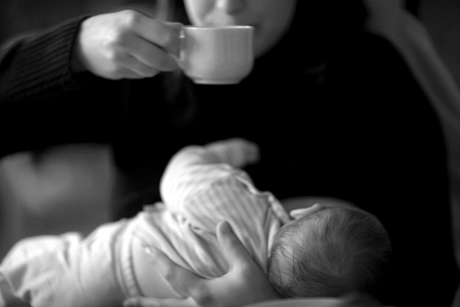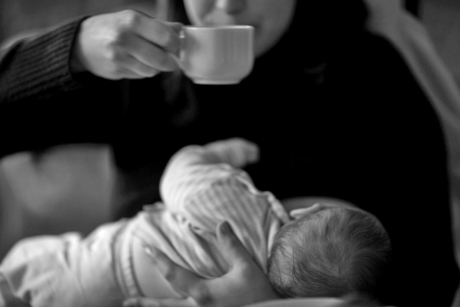Remixing 23: A Workshop in Monochrome23 user Axel Stasny (http://www.23hq.com/axel_fotografiert) posted an interesting photo of mother and child (http://www.23hq.com/axel_fotografiert/photo/1633948) that I thought might be a good (though challenging) candidate for monochrome post-production. This is a story of one man, Photoshop and an idle evening. All of these ideas were lifted from Tom Ang's "Digital Photography: An Introduction". 
This one was quite simple. I converted to LAB and removed all channels but lightness.
The a and b channels contain very little information, and in this dark photo even less was present, so all we are left with are gradients of gray. I de-saturated the image a bit and saved to JPEG. 
This one was created with classic RGB channel manipulation.
I chose the blue channel because it really juiced up the light areas and added some interesting contrast (at the expense of darkening the already dark shadows). For example, the contrast and detail in the lighter parts of the image really stand out. 
More channel manipulation.
I just grabbed the Channel Mixer and played with the knobs with Monochrome checked until I got the results I wanted. It was easy to posterize the image, so a subtle hand was necessary. 
Straight grayscale conversion, juiced up with the Shadow/Highlights tool to bring back some of the details and contrast.
This brought out a lot of detail that was missing in the other experiments.
In a few short hours I learned quite a bit about monochrome post-processing. While I don't think I was completely successful adding interest to this photo, it was valuable to see exactly how different channel and level manipulations changed the image.
In retrospect, I think I like the original image more over these attempts. Even though it is in colour, the original almost looks like a sepia or duotone image without any further processing. Thanks to Alex for letting me experiment on this sweet and sensitive photo! |









